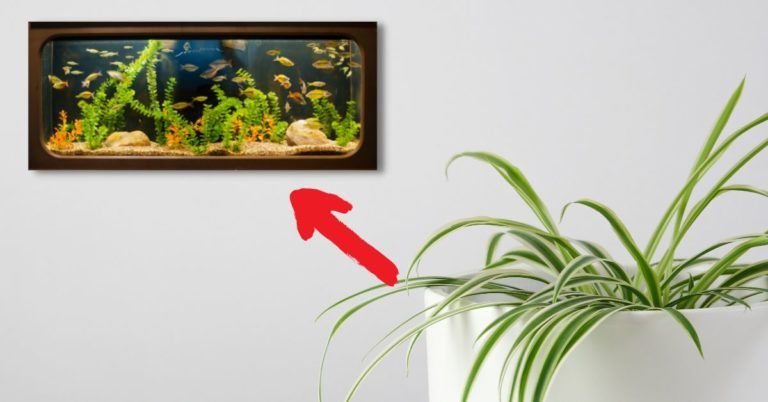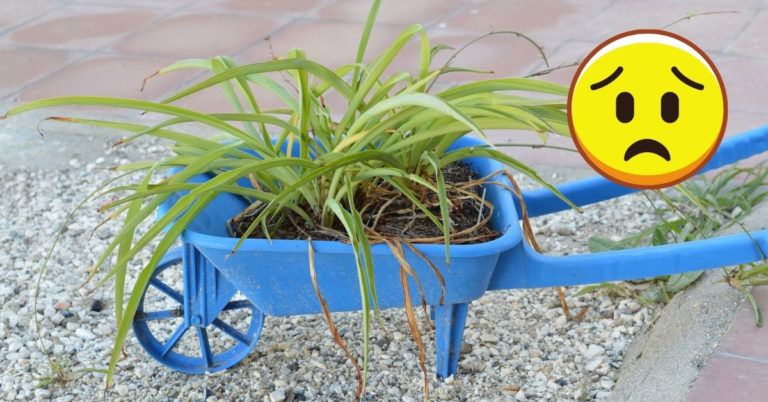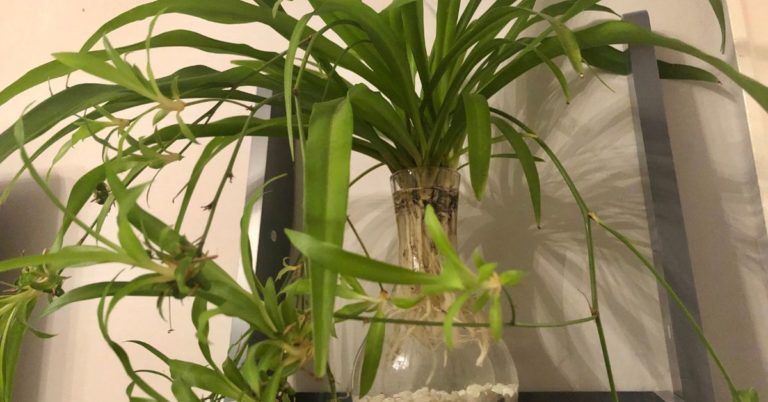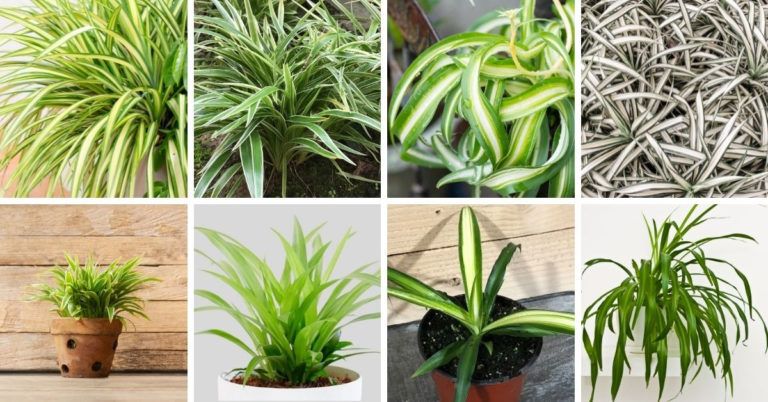How to Get Rid of Bugs on Spider Plants? (6 Common Bugs and Solutions)
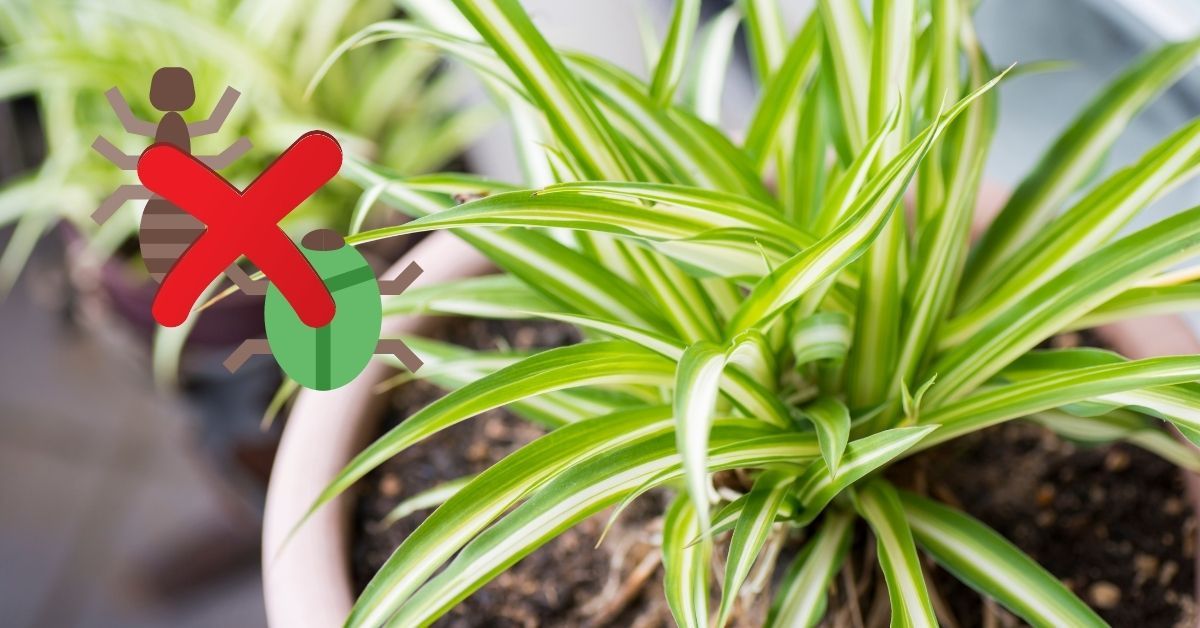
You find that you have bugs on your spider plant, and they are killing the leaves.
As a spider plant owner, this is upsetting, to say the least!
Plant owners know how frustrating it is to find bugs on their plants.
There are many ways of getting rid of those pesky little creatures from your spider plants with just a few simple steps.
You can find methods ranging from spraying them with water or rubbing alcohol every week, leaving pots in indirect sunlight daily throughout the summer months, or using harsh chemicals like the insecticide.
This blog post will educate you about which bugs can ruin your Spider Plant.
And also, you’ll learn steps for both preventing and getting rid of these insects from your spider plants.
So let’s get started!
What are the most common bugs on spider plants?
Although spider plants do not usually attract any kind of bugs, they do sometimes get insects such as aphids, mealybugs, whiteflies, fungus gnats, scales, and spider mites.
These bugs can quickly destroy a spider plant if left untreated.
You’ll need to know the lifespan of the bug you’re dealing with to have the best chance of getting rid of it.
Here are some of the most common bugs to look out for on your spider plants.
Aphids
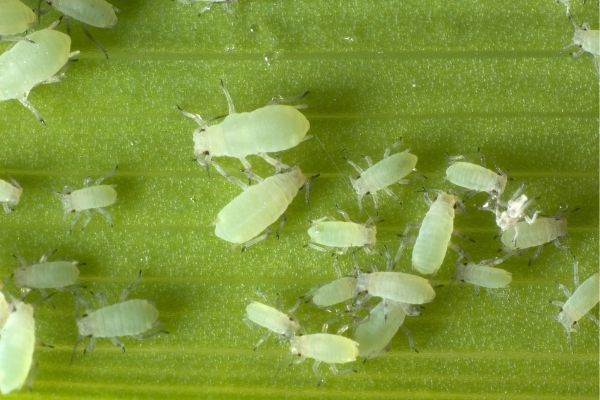
Aphids are soft-bodied insects that lay eggs that hatch into living insects. They don’t usually fly, but if the colony is too large, they will.
They are often light green in color, pear-shaped, and you can see them with the naked eye, although they can also be yellow, brown, red, or black in color.
Aphids gather in huge numbers, making them highly visible. They drain the plant’s fluids using their mandibles, leaving behind a wilted, limp leaf.
These soft-bodied insects feed on the liquid inside the leaves by piercing the sensitive tissue.
Also read: Why is My Spider Plant Turning Yellow?
Mealybugs
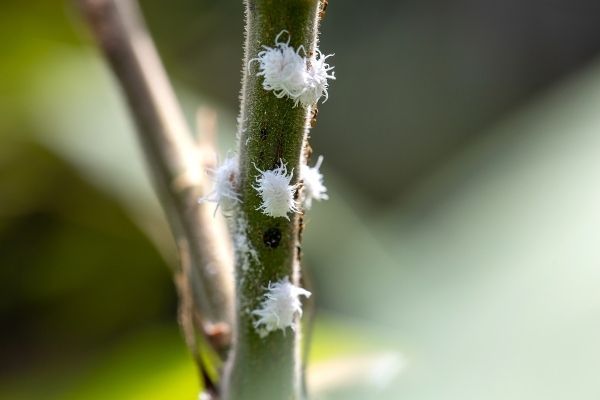
Mealybugs are white, soft-bodied insects with long tails that suck plant fluids with their mouthparts.
Their white appearance and cotton-like egg sacs make them plainly visible to the human eye.
A white, cotton-like material on the spider plant’s leaves indicates that mealybugs are present.
Mealybugs have the ability to lay up to 600 eggs at a time, allowing them to reproduce fast.
They swarm in houseplants’ tricky cracks and along the veins of the leaves. An infestation of the mealybugs can cause your spider plants to wilt, turn yellow and drop some of their leaves.
Whiteflies
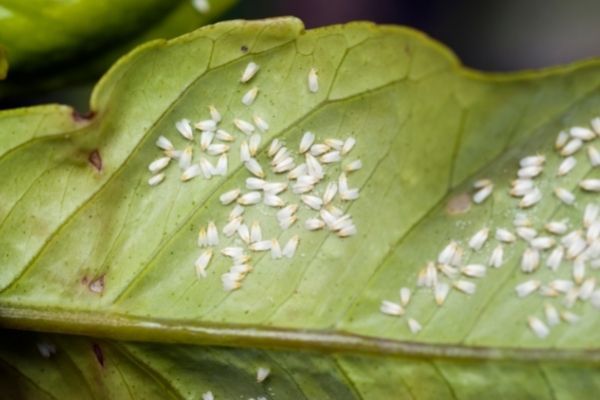
Whitefly is a tiny, soft-bodied white fly that lays eggs on your plants and congregates in groups. It is linked to aphids.
Unlike the adults, which are easy to identify, the larvae are virtually hard to see and are responsible for the majority of the plant’s harm by sucking the plant’s fluids.
They may be found hiding on the undersides of leaves. If you rock your spider plants and see a bunch of small white insects fly up, it’s a sign that there are whiteflies on the plant.
Fungus Gnats
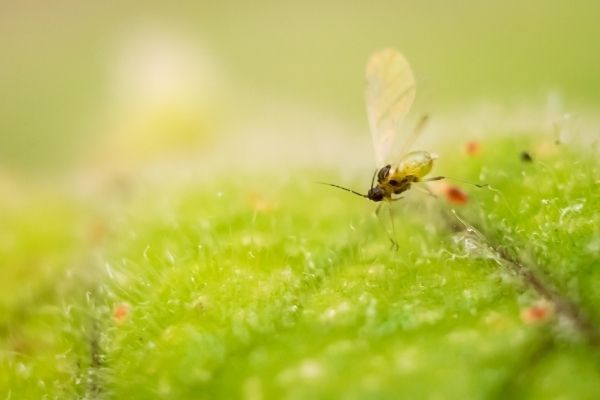
Fungus gnats are tiny black insects that live in the soil of your plant.
These small brown or black insects, sometimes known as sciarid flies, fly around the plant. So they are quite visible to the naked eyes.
Fungus gnats can be found in soil that has been too moist for too long.
Their larvae eat organic materials in the compost, but sometimes they may also eat the roots of plants.
Healthy spider plants can tolerate this, while those that are young or weak cannot.
They are more bothersome to you than destructive to your plants.
Scales Insect
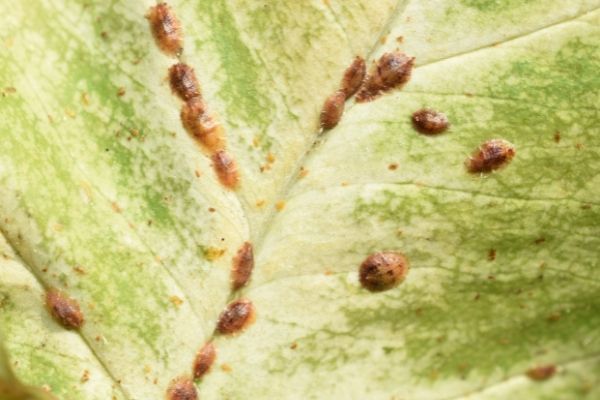
Scale insect is a brown, ironclad bug that may quickly go undetected because it fits in with your plant.
These animals are occasionally concealed on plants with long stalks but are easy to spot among green foliage, such as a spider plant.
This bug does not move around and comes in yellow or brown color.
The waxy covering protects these bugs, and once they are settled in your plant, they begin sucking the sap, and the plant begins to wither.
If you see brown lumps on your spider plants, you know that they need a little help.
Your plant will become weaker, and its leaves will turn yellow if the problem is not addressed.
Also read: Why is My Spider Plant Turning Brown? Find Out Why!
Spider Mites
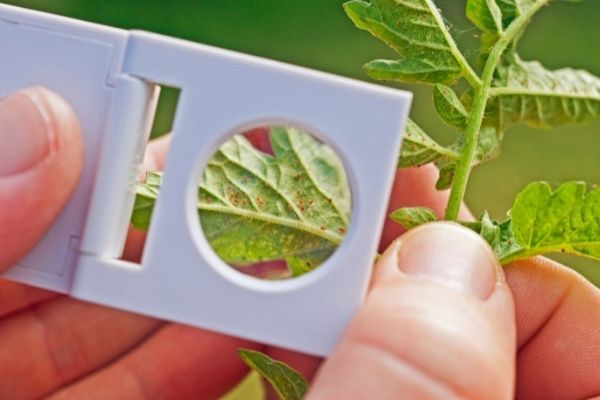
Spider mites are linked to some arachnids in the same way as spiders are. They’re extremely common pests, so your spider plant is almost certain to get infested at least once while it’s alive.
Spider mite damage appears on the leaves as yellow or brown spots, although you may first notice their webs.
Spider mites spin webs on the undersides of leaves, stalks, and even on the fronts of leaves due to their voracious appetites.
Inspect the spider plant regularly, using a magnifier if required, since you must remove spider mites as soon as possible.
Also read: Do Spider Plants Attract Spiders? Read Before You Buy!
How to get rid of bugs on your spider plants?
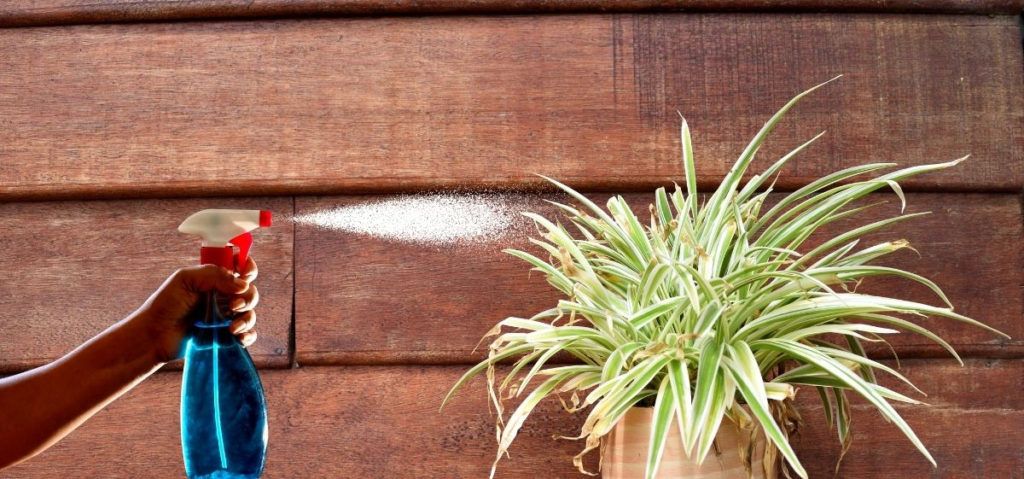
We know that spider plants are easy to care for because they are pretty resilient and can take some pretty harsh conditions.
Generally, spider plants will not attract any kind of bugs. But, sometimes, they can also succumb to bugs invasion just like any other houseplants.
Bug problems, if not handled immediately, can easily lead to your spider plant’s demise.
When treating your spider plants, remember that the first step should always be to remove any other houseplants in the same area.
Bugs and pests can hop from one plant to another, so it’s best to check out all the houseplants and take them out of the same room.
The good news is that there are several solutions that you can use to keep your spider plants free of any unwanted insects and pests.
So here, we have listed a few ways to control these insects.
How do you get rid of aphids on spider plants?
Spraying the stem and leaves of your spider plant with water outside of your house is an easy way to get rid of aphids on spider plants.
When spraying, turn the spider plant on its side to avoid aphids falling into the soil.
Afterwards, wash the plant thoroughly with warm, soapy water to remove any remaining contaminants from its stems and leaves.
How to get rid of scale on spider plants?
To get rid of scale on your spider plants, you can physically scrape off the scale with a fingernail, cotton swab, or other tools.
Because of the pest’s shell, spraying products like insecticides or neem oil are useless.
When scraping the scale, make sure the bugs are dislodged and don’t accidentally fall into the soil.
Then, spray your plant with a solution of water, dish soap, and isopropyl alcohol to prevent the scale from returning.
How to get rid of mealybugs on spider plants?
You can quickly get rid of mealybugs on spider plants by spraying them with water or wiping them away with a cotton swab soaked in rubbing alcohol.
If you discover even a single mealybug, get rid of it right away since it may spread fast and be difficult to eradicate if left untreated for too long.
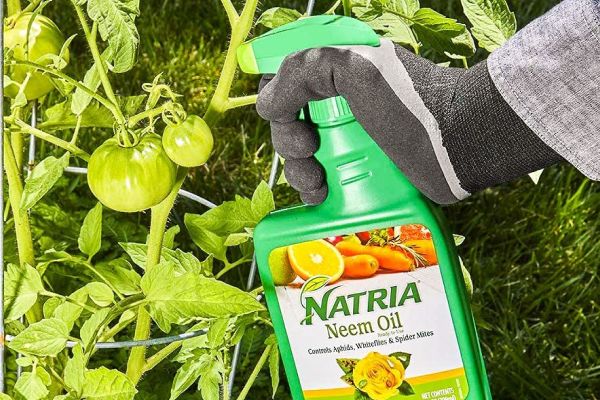
These bugs will die as soon as they hit the ground. After that, you can spray neem oil or insecticidal soap to the leaves and stems of your spider plant to help kill off any remaining mealybugs.
How to get rid of whiteflies on spider plants?
To get rid of whiteflies on spider plants, you can move the plant outside and spray off the leaves with insecticidal soap or a solution of warm water and dishwashing liquid.
You can keep spraying until there are no more whiteflies on the plant’s leaves.
You can also catch adult whiteflies by using sticky traps for regular bugs. A sticky trap set near the plant will catch a lot of this bug.
How do you get rid of spider mites on plants naturally?
Firstly, because spider mite eggs are tiny and often hide in all the small cracks of the plant, they are extremely tough to get rid of your spider plants.
Next, you want to remove any leaves or stems that are seriously infected. Because the spider mites prefer young, weak plants, this should eliminate a large amount of the bug.
After that, to eliminate adult spiders and destroy their webs, start by spraying the spider plant’s leaves with a hose outside.
Before spraying, you want to cover the soil’s surface with plastic bags to keep the spider mites from falling back into the soil.
Next, to naturally get rid of spider mites on plants, you want to spray your plants with a mixture of neem oil and warm, clean water.
Add a tablespoon of neem oil per quart of water to a spray bottle and shake it up.
Finally, you want to spray the mixture all over the plant. Then, allow the mixture to rest for an hour or so before spraying it off with water.
You want to repeat this process as many times as necessary to get rid of all the spider mites on your plants.
How to get rid of gnats on your spider plants?
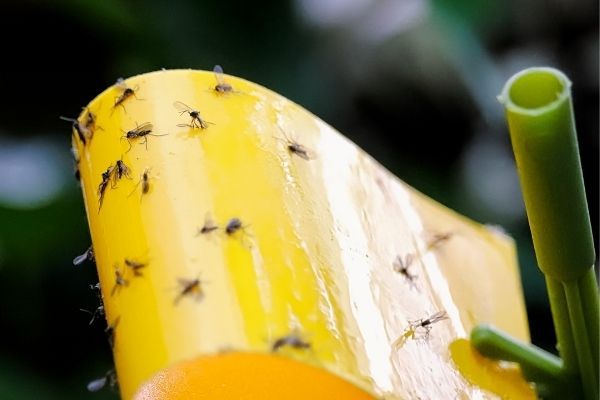
To get rid of gnats on your spider plants, you can use insect traps or a pitcher of soapy water to catch the adults gnats.
Then, you can scoop off the larvae-infested soil and remove the top layer of soil or entirely repot the plant if you want to be sure.
Next, you should allow the soil of your spider plants to completely dry. When the soil medium dries out, the eggs and larvae of the gnats get malnourished and eventually die from lack of water.
You can also try to make a solution of water, dish detergent, and apple cider vinegar to get rid of fungus gnats. After that, place this solution near your spider plants that are infected by gnats.
Though the effects may not be seen immediately, after a few days, your sticky traps and the liquid solution will be full of bugs, and you’ll notice fewer gnats buzzing around.
How do you keep bugs off your spider plants?
As I have said before, to keep pests away from your spider plants, you need to create a good environment for the plants to live in. You need to make sure the plant is healthy, with good soil, water, and air circulation.
Bugs are more inclined to target stressed, sick plants, so keeping your spider plant healthy is the best way to prevent bugs from getting on it.
Another thing you can do is to avoid introducing plants with bugs into your spider plants’ homes.
Examine the plant carefully before you bring home new plants from the garden/nursery.
Bring your glasses and, if you wish, a magnifier when you go plant hunting.
Don’t bring the plant into the house if you find anything unusual on your new plants, such as tiny holes or discolorations.
Whenever I bring a new plant home, I separate it from the rest of my plants for about a week while examining its health and conditions.
By doing this, I can detect any pests or diseases lurking in the plant before I take the chance to bring them into my home and risk spreading the pests and diseases further.
FAQs about spider plants and bugs
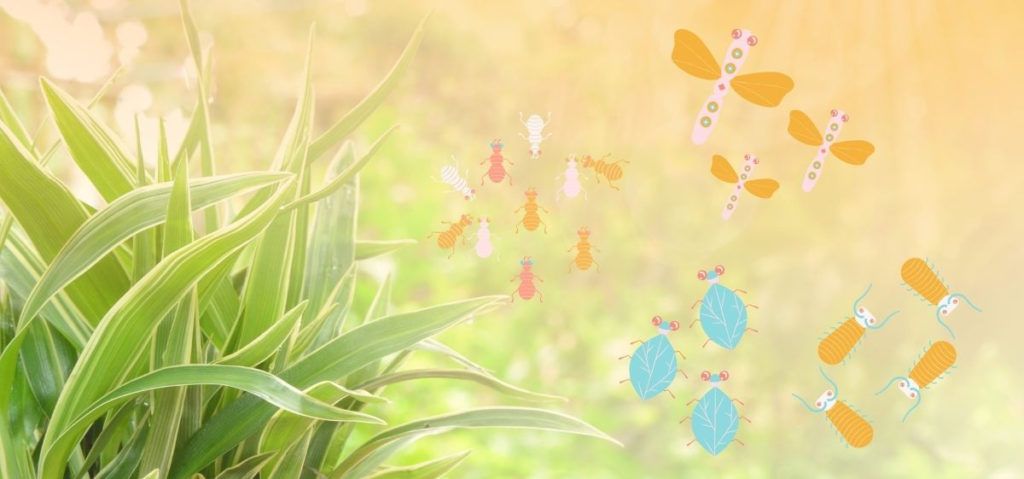
Why does my spider plant have bugs?
Regardless of how cautious we are about the plants we bring home, many bugs can still swarm your spider plants.
Bugs’ eggs are frequently inactive, waiting for the ideal conditions for invasion, which generally requires a weak plant.
Generally, your spider plants will not attract any bugs, but if you don’t keep the plant healthy, it can become a victim of a pest or disease.
Do spider plants attract ants?
No, spider plants will not attract ants. Most of spider plants varieties do not have any kind of chemical that attracts ants or other bugs.
However, ants might find their way into your spider plants, especially if you don’t keep your house and garden area clean.
Are spider plants prone to bugs?
No, generally speaking, spider plants are not prone to any bugs. However, some bugs may get into your spider plants when your plant is sick or weak.
If you do not keep your house and garden clean and dust free, spider plants are more likely to attract unwanted bugs.
Final Words
So there you have it.
I hope this blog post helps you understand what methods to use to get rid of bugs on your spider plants.
Finding bugs on your spider plant is a common occurrence for all spider plant parents.
Remember, as soon as you notice a bug infestation on your spider plants, no matter how minor, you should isolate the plant and treat it immediately.
Now, I’d like to hear from you:
Have you ever seen any bug infestations on your spider plants? If so, what did you do?
Let me know in the comments below.
For more houseplant care information, read our beginner guide about taking care of an indoor plant.
Until then, happy gardening!
